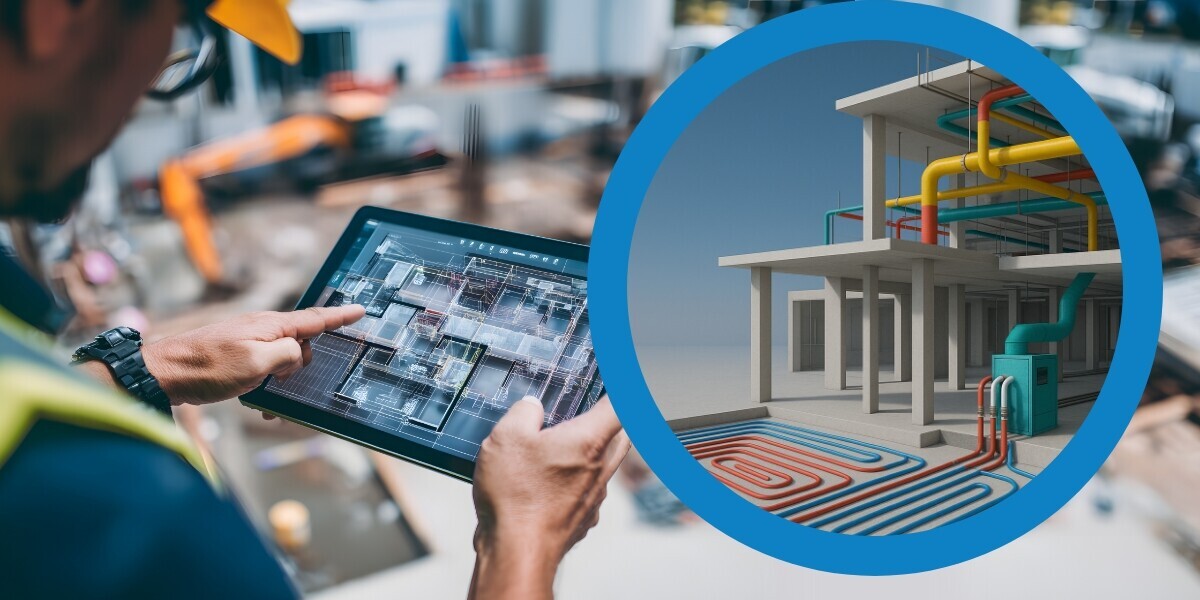BIM and digitalization of radiant systems: Indecal's integrated vision
Indecal brings BIM to the design of radiant systems, simplifying flows and improving efficiency, collaboration and sustainability.

Radiant air conditioning is now one of the most dynamic areas of building services engineering, thanks to its ability to combine comfort, energy efficiency, and sustainability. However, the growing complexity of construction projects requires tools that simplify the work of professionals and ensure effective coordination between all disciplines involved. It is in this context that BIM (Building Information Modeling) and digitalization become strategic elements: technologies capable of transforming the way systems are conceived, designed, and built.
Indecal , an Italian company with a long tradition of innovation in radiant systems, has made digitalization one of its growth levers, providing designers and installers with comprehensive BIM libraries and support tools that allow them to integrate radiant systems simply and precisely.
From traditional design to BIM: a qualitative leap for radiant systems
Traditional system design often faces obvious limitations: fragmented 2D drawings, partial information, and the risk of inconsistencies between architects, engineers, and system designers. BIM overturns this logic, allowing you to work on a single digital model that integrates structural, architectural, and system data. In this shared environment, the integration of Indecal radiant solutions is immediate and precise: the three-dimensional models, enriched with technical parameters, allow you to immediately verify dimensions, performance, and compatibility with other systems.
The result is faster, more coordinated and reliable design , with reduced risk of error and a better ability to predict costs and performance over time.
Comprehensive digital libraries for simplified design
One of the strengths of the Indecal offering is the availability of updated BIM libraries, downloadable in Revit format from the main technical portals . These models are not limited to graphic representations, but contain detailed information on the technical characteristics of each solution: thicknesses, materials, thermal output, compatibility with low-temperature heat pumps, and installation types.
Whether it's a low-thickness system like Slim 18 , ideal for renovations, or modular panels for large surfaces, designers can integrate the most suitable solution in just a few clicks, choosing from variants and configurations without wasting time on surveys or manual adjustments. This digitalization translates into significant time savings and greater project reliability.
Collaboration and coordination: the added value of digitalization
In addition to facilitating the design phase, BIM becomes a valuable tool for collaboration between the various stakeholders in the construction industry . Through the shared digital model, architects, engineers, contractors, and installers can access the same information, updated in real time. This dramatically reduces the risk of interference on the construction site, simplifies communication between the parties, and allows for more efficient planning of operational activities.
In other words, BIM isn't just a technical design tool, but a truly integrated working method, capable of improving execution quality and optimizing construction timelines. For radiant systems, which must coexist with structures, cladding, and other systems, this synergy represents a crucial advantage.
Energy efficiency and sustainability monitored digitally
Using BIM allows not only to design and coordinate the system, but also to simulate and monitor the energy performance of the radiant system. Thanks to the technical data entered into the digital models, it is possible to evaluate consumption, performance, and environmental comfort in advance. Combined with low-temperature heat pumps, Indecal radiant systems can guarantee energy savings of up to 70% compared to traditional systems, contributing to the achievement of the sustainability objectives required by the market and European regulations.
Digitalization thus also becomes a tool for environmental responsibility, capable of quantifying the real benefits of systems and supporting designers and clients in making more informed choices.
Indecal: a digital partner for plant engineering professionals
The decision to invest in BIM and digitalization confirms Indecal's commitment to being more than just a radiant solutions provider, but a true partner for professionals. The ability to access comprehensive digital libraries, integrate systems into collaborative environments, and evaluate system performance in advance makes design simpler, faster, and more reliable.
For architects, engineers, and installers, this translates into a concrete competitive advantage: the ability to offer end customers more efficient, comfortable, and sustainable buildings, built in shorter timeframes and with controlled costs.




